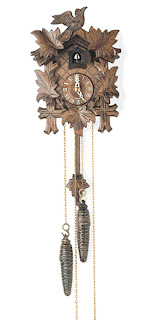
We had been friends since the early 1980’s when met for the first time. Though we lived in the same city for about three years and worked in the same organisation for just about decade, our paths crossed again and again, in New Delhi, Hyderabad and Mumbai as he went job-hopping and I got shunted from state to state.
I had had a taste of Joe's sense of humour even before I actually saw him! On confirmation, Joe was posted as Assistant Accountant in Bombay (Main) branch. So was his batchmate Damodar Menon. They had a letterhead printed jointly with 'Menon & Manimury, Assistant Accountants' emblazoned on it – a la Lovelock & Lewis, or Aiyar & Cherian, Chartered Accountants. I had happened to see this piece of stationery even before I set my eyes on either of the personalities involved.
I still remember a joke narrated by him. A Sardarji was visiting Europe and was intrigued to see people wearing masks and costumes and dancing celebrating Mardi Gras (Fat Tuesday) as part of the Carnival between Epiphany and Ash Wednesday. He asked a passer-by what the merriment was about and got the obvious and terse reply, ‘Mardi Gras.’ The turbaned foreigner thought to himself, ‘Ye kaun si gaali hai jo hum nahin jaante? (What is this abusive word I do not know?)’
Joe had a way with kids. As a bachelor, he used to be a regular at our rented house in PTP Nagar, Trivandrum. He got along famously with my son Hari and his playschool-mate Miriam (our colleague and neighbour Kora Ipe's daughter) – both four years old then. These two kids used to call him Joe (no 'uncle'). He used to be so much a part of their lives. A relative who called on us overheard them refer to Joe in their conversation asked them if Joe was a boy who went to the same playschool as they did!
On Sundays, he would join us at home for lunch preceded and succeeded by games of Scrabble. Which reminds of words like SITCOM and QUASAR which were rather new to the language in those days and rare words like SYZYGY that he introduced us to. No prizes for guessing who won the games.
On some of these days, the lunch would be preceded by a glass or two of chilled beer. As Joe popped the bottle and poured the frothy amber liquid into the schooners, Hari would sidle up to him. ‘Pour some for me, Joe,' he would ask, stretching a small glass. Joe would turn stern and say, ‘No. Not for you!’. As Hari continued to plead, explaining, ‘A small glass for the small boy!’ Joe would tell me, ‘We shouldn’t be drinking in the presence of kids.’ He would never smoke in front of children, for he was keen that he should not set a bad example.
During the days I was in regular touch with Joe, he used to smoke, rather heavily. The blood donor's forum which we were a part of approached Joe in their membership drive. Joe joined but cautioned, 'The suction pump would first go "Puff, puff!", drawing the smoke running through my veins before it starts drawing blood!'
During one of the occasions when I saw him for an hour or two in later days, he did not light a cigarette. When asked, he said he had quit smoking, though I suspect he had only reduced the daily quota.

Joe was an avid reader. It was he who introduced me to Sci-Fi and its patron-saints Isaac Asimov and Arthur C Clarke. And he tried to inculcate reading habit in kids. We still have what is referred to in our home as Joe’s Alphabet Books that he had gifted to Hari – a set of five volumes from My First Library series brought out by the Readers' Digest in association with Mothercare.
Given the range of books he read, Joe HAD to be a repository of knowledge. And he was a great quizzer. I recall participating in some quizzes either as a partner or as a rival. I used to marvel at the way he used to hazard ‘intelligent guesses’ and score points. I recall as vividly the way my similar attempts at second-guessing would fall flat.
I used to think that a cloud is a cloud is a cloud is a cloud. Till I met Joe, that is. Joe took me through the cirrus, cirrocumulus, cirrostratus, etc to the cumulonimbus and the cumulus. Thanks to Joe, I learnt that what I had all along thought was a red star was in fact a planet, Mars to be exact.
A little-known fact was that Joe was a star-gazer. He had spent many weekends with us. After sunset, he would go up to the terrace with Hari to watch the stars. In a matter of weeks, Hari could identify some constellations like Ursa Major and Sirius. On days Joe was not with us and we went up on the terrace, Hari would draw our attention, ‘Daja, that is Joe Uncle’s star, the..e..r..e..’
It was from Joe that I had my little education in astronomy, that stars are identified by their color, which indicates their temperature based on which they are divided into spectral classes O, B, A, F, G, K, and M, the hottest being O (blue in color) and the coolest stars being M (red). He also told me how to remember it by the mnemonic ‘Oh, be a fine girl, kiss me.’
This evening, after the sun sets, I will get onto the terrace and look at the sky. I am sure there will be a new star shining in the blue sky: Joe.
